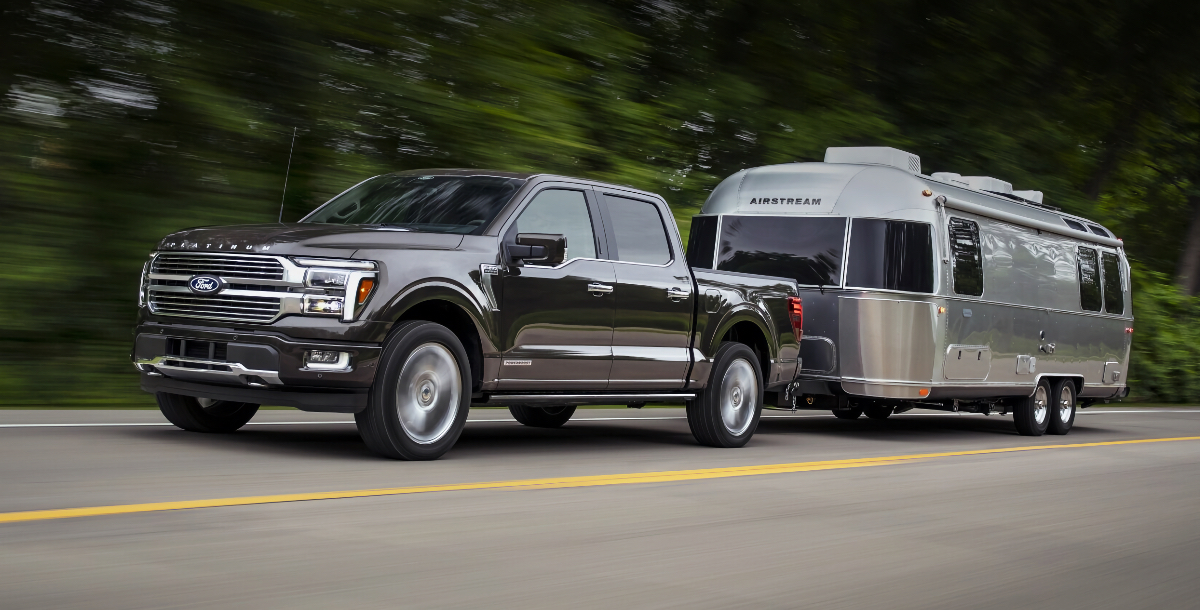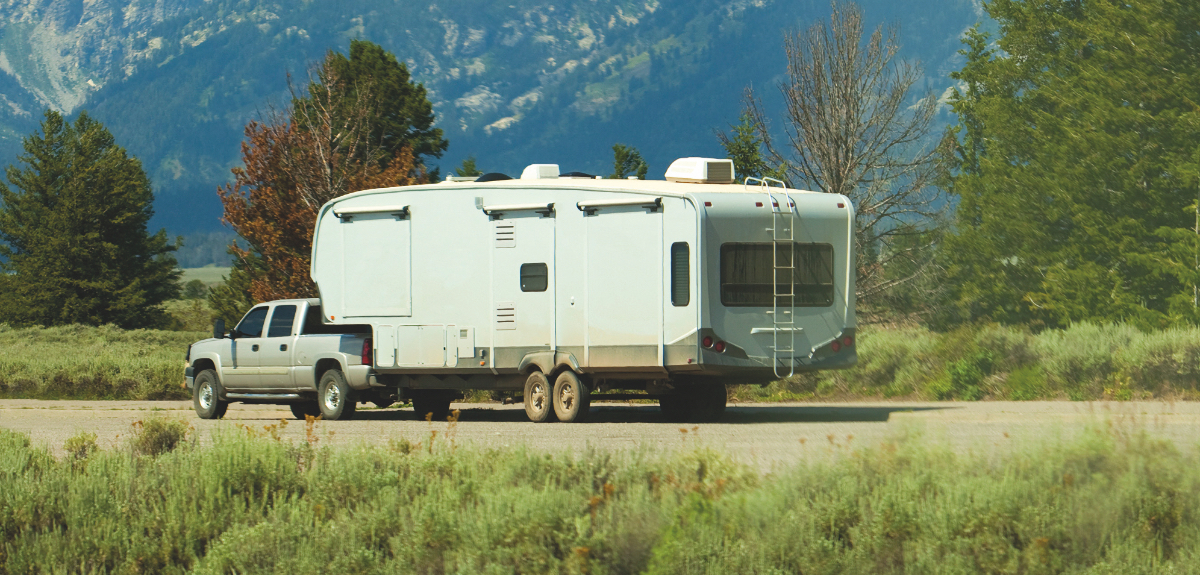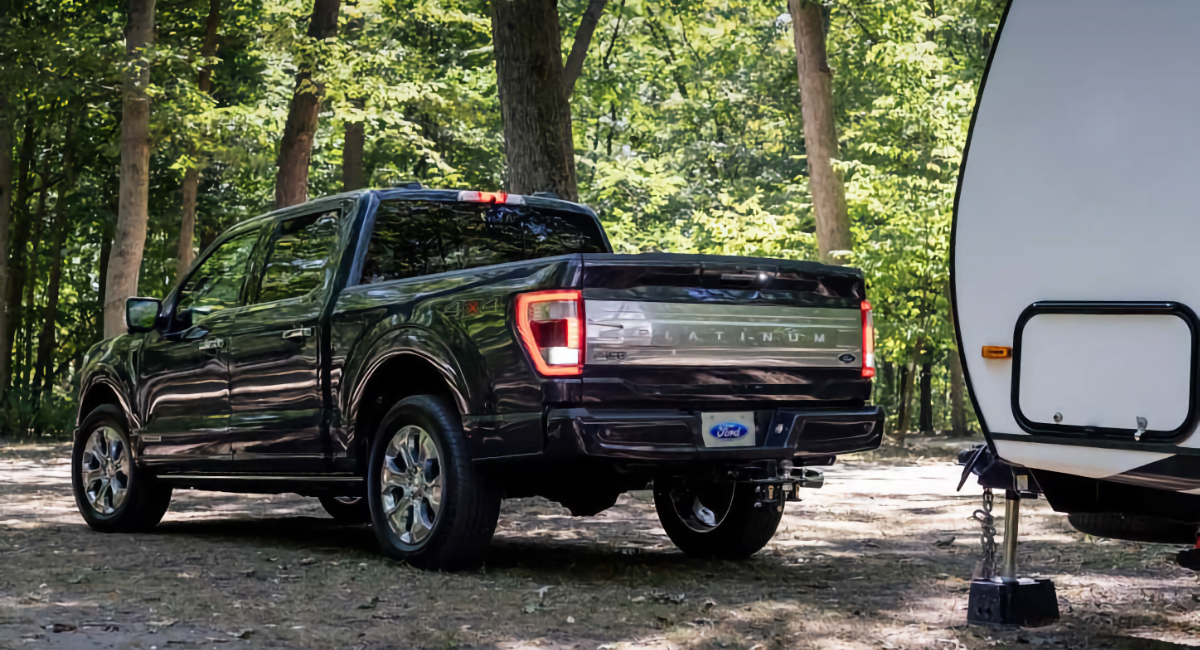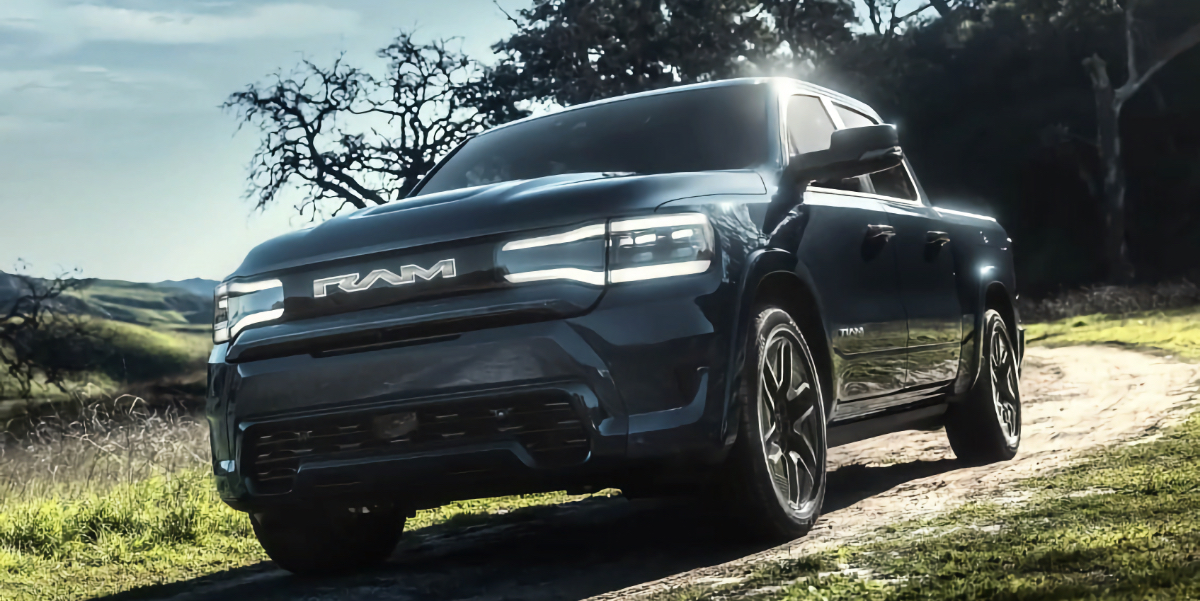Choosing the Right Tow Vehicle
Image Caption:
Ah, decisions, decisions. With so many choices available in tow vehicles, selecting the one that works best for your application may seem like a monumental task. After all, there are many variables to consider, including budget, brand and towing capacity, it’s important to examine them all carefully before making a purchase. Going through the effort to better understand each variable and to account for all of them up front will lead to a more pleasant trailering experience later.
Words of Wisdom
The tow-ratings guide in this section lists the maximum tow ratings for vehicles with specific equipment, but for many vehicles the maximum tow rating is optimistic. Always check with the manufacturer before making a purchase. What follows is a layman’s explanation of the terms you need to know which, when combined with readings from a public scale and your own calculator, should help you determine the correct tow rating for the tow vehicle you plan to buy.
Gross Combination Weight Rating (GCWR): The total allowable weight of the truck, the trailer, the cargo in each, fluids and occupants.
Gross Vehicle Weight Rating (GVWR): The total allowable weight for the vehicle, including fluids, options, occupants, hitch, cargo and trailer hitch weight. The trailer’s GVWR, sometimes referred to as Gross Trailer Weight Rating, is the total allowable weight of the trailer, fluids, occupants, options and cargo.
Gross Axle Weight Rating (GAWR): The total allowable weight on any given individual axle. Note that this includes the weight of the tires, wheels, brakes and axle itself.
Maximum Tow
Rating: The manufacturer’s weight limit for towed loads. For conventional trailers, this normally includes a hitch-weight limit as well; for fifth-wheels, the pin weight is applied to the truck’s GVWR and its rear-axle GAWR. The GVWR and GAWR for all motor vehicles are listed on the data plate, typically affixed to the driver’s door frame, fuel door, glove box, end of the dashboard, or other easy-to-access location. Brochures and window stickers may be inaccurate. All trailers should have a weight sticker — normally found in an interior cabinet — that lists the trailer’s Unloaded Vehicle Weight (UVW), GVWR, weight added by freshwater and LP-gas and the resulting payload capability. In many cases, optional equipment — such as air-conditioning units, generators and the fuel they run on — sneaks onboard after weighing, and may not be reflected on the sticker. And don’t forget the fuel-fill tanks that some SURVs offer for campground refueling of motorcycles and ATVs. The GVWR figures are neither guidelines nor estimates; they are limits, and there are numerous valid reasons the manufacturer arrived at the figures given. If you think these figures are “close enough” or have a fudge-factor percentage built-in, think again. Your warranty coverage — and your safety — may be at risk.
There is one sure way to find out what your trailer weighs, and that is to fill it with everything you normally travel with, right down to the soap and soda, and weigh it at a public truck scale. Without forming a long queue, get the hitch weight, axle weight and total weight. Assuming that the axle weight is below the GAWR, the total is below the GVWR and the hitch weight is below the maximum given for your tow vehicle, you can then move on to tow-vehicle selection.
For a new trailer, consult the weight sticker on the unit of your choice on a dealer’s lot and refer to the uvw and Cargo Carrying Capacity (ccc). Estimate how much cargo you will add, being mindful of the gvwr, and use that number while selecting a tow vehicle. To a lesser extent, tow-vehicle weight is variable as well. Brochures and tow guides frequently list how much a truck weighs, but this number generally applies to the most basic model in that configuration, without any options. In some cases, distinctions are made by engine, transmission, drive system (2WD or 4WD/AWD) and, in other cases, by cab or bed styles. If the dealer does not have a vehicle equipped as you want that is available to weigh, or cannot provide option weights, you can form rough estimates. Bigger engines add weight, diesels more so because they come with additional accessories; 700 pounds more than the standard gas engine is common. Add up to 175 pounds for an optional transmission, about 400 pounds for 4WD and a bit less than 300 pounds for longer beds. Then add other options such as luxury-trim levels, as all those electric motors add up. The towing package and hitch could go another 100 pounds, and even larger wheels, two-tone paint and exterior trim can also have an effect.
For Example
The following is how to calculate the realistic towing capacity of the vehicle that interests you. For example: Consider a fictional one-ton longbed, diesel, extended cab, 2WD, single-rear-wheel pickup set up for towing. We’ll arbitrarily assign it a GVWR of 9,900 pounds, a front GAWR of 5,000 pounds, a rear GAWR of 6,824 pounds, a GCWR of 23,000 pounds and a quoted maximum tow rating of 17,000 pounds. As is often the case in single-rear-wheel trucks, the rear axle’s GAWR on this truck is derived from each tire’s maximum load of 3,412 pounds. Pickups such as this normally start at more than 6,000 pounds, and with diesel, automatic and nice trim, figure that with a full tank of fuel and hitch, this unit weighs 7,000 pounds. If we add two “standard-size” people (154 pounds each), a few tools and some cargo, it weighs 7,500 pounds. That is split to 4,000 pounds on the front axle, and 3,500 pounds on the rear axle.
The first thing you should have noticed is that the maximum tow rating cannot apply with the truck fully loaded because GCWR (23,000) minus GVWR (9,900) leaves 13,100 pounds — about two tons less than the quoted towing ability. After adding options and people to the example truck, and subtracting that value (7,500) from GCWR (23,000), the effective working tow rating of the truck becomes 15,500 pounds, about 1,500 pounds less than the truck’s quoted maximum towing rating.
However, you have yet to check all the numbers and verify that a 15,500-pound trailer will work. If that trailer is a fifth-wheel and has 20 percent of its weight on the pin, that adds 3,100 pounds to the back of the truck. This would make the truck overweight — its 7,500-pound ready-to-roll weight plus the 3,100 pounds on the pin equals 10,600 pounds — 700 pounds more than the truck’s GVWR, and just 224 pounds shy of the rear-axle limit of 6,824 pounds. SUVs cannot always escape either. The vehicle’s loaded weight must be subtracted from the GCWR to determine the realistic tow rating.
Consider This
The tow-ratings chart lists vehicle-towing maximums segregated by engine, cab style, drive and single- or dual-rear wheels as appropriate. In general, assume the maximum tow rating always requires a towing package — special towing equipment (see “Towing-Package Essentials”) — and the highest numerical axle ratio offered, and as the example shows, maximums can be confusing. You can do your own estimates by starting with the information given and keeping the following generalizations in mind.
Transmission
For the majority of vehicles, automatic transmissions offer the higher tow ratings when they vary by transmission. On heavy-duty (HD) models, the difference may be 1,000 pounds or less, and on lighter-duty vehicles, a manual might rate a 2,000-pound lower tow rating. Exceptions include high-output engines that are available only with manual gearboxes, vehicles where the manual weighs more than the automatic and transmissions in vehicles designed for high performance and not towing.
Axle Ratio
Lower gearing (the numerically higher ratios, e.g. 4.10:1, 4.56:1, as opposed to 3.55:1, 3.73:1), typically produces the highest tow ratings because of greater torque multiplication. There is wide variance in the axle ratio’s effect on tow rating, with some diesel-powered rigs varying only a few hundred pounds. On others, changing from a 3.73:1 to a 4.30:1 sometimes increases the tow rating by 3,500 pounds. In the past, some ratings have increased by a factor greater than three (from 2,000 to 7,100 pounds) simply by using a different axle ratio. Lower gearing will also make your vehicle accelerate quicker up to 50-55 mph. In general, a one-step drop in axle ratio (4.10:1 to 3.73:1) on an HD pickup will drop tow rating and GCWR by a ton. Lower gearing has an adverse effect on fuel economy, but it’s usually not proportional to the gain in towing ability. Under the best circumstances, the difference between the highest and lowest gear ratios offered (say, 3.42:1 and 4.10:1) results in a 1.5-mpg decrease in non-towing, steady state-highway cruising. In most conditions that change is less than 1 mpg, and if you tow a relatively heavy trailer a lot, there’s no question that the lowest gearing is best.
Drive System
Vehicles that drive only two wheels, be they front or rear, generally have higher tow ratings (all other things being equal). Even though modern 4WD and AWD systems are quite efficient, a small amount of parasitic loss uses up energy. More importantly, 4WD systems add weight — easily up to 400 pounds on some HD pickups — and that weight frequently comes off the tow rating. Unless the gcwr and gvwr are higher, a 4WD version will probably tow a few hundred pounds less than its 2WD counterpart.
Towing Package
If you can order a towing package, do so. Not only is it usually required to get the top tow rating, the contents rarely can be duplicated for the original cost — and it will add to resale value. Frequently you can see the hitch or tow plug, but there are often changes to the wiring system (including up-rated wire and fuses), alternator, battery, cooling system, power steering and lubricants.
Bed Length/Style
If there’s a difference, a longbed truck may rate slightly lower in tow capacity — 150-250 pounds — because the longer bed adds weight. In other cases, there is no change because the longer wheelbase is beneficial. Note that the more “styled” beds marketed under a variety of names typically are heavier than conventional slab-sided beds, and that cab-and-chassis figures do not reflect any bed unless otherwise noted. A steel bed for a medium-duty cab-and-chassis could quickly eat up an entire ton of its GCWR.
Single or Dual Rear Wheels
Most people assume that a dually pickup will have a higher tow rating than a single-rear wheel unit, but this is not correct. In many cases the gcwr is limited by factors other than the number of rear wheels and does not change, and in those cases the weight of the wider axle, bigger brakes and two more tires and wheels is subtracted from the gcwr. The dually no doubt provides a more stable towing platform for the heavier trailers, although not always with the highest tow rating.
Tires
Wheel sizes continue to grow commensurate with their popularity, with some tow vehicles offering 20-inch-diameter wheels as factory options. However, using a larger wheel and lower-profile tire means a smaller air cushion and lower tire sidewall, to the extent that tow ratings generally drop whenever the wheel size increases. Be sure to read the fine print on the packaging carefully.
The Hardware Store
Before purchasing any vehicle for towing, ensure that the equipment required is available for your vehicle. You may find that the new-kid-on-the-block is a very capable tow vehicle, but no one makes a fifth-wheel hitch for it. Also beware of hitch-ball and receiver ratings, as some trucks are rated for heavier loads than any easily found hardware can handle, and therefore may require special-order parts. Before making a purchase of a new vehicle, we also suggest that you acquire the manufacturer’s comprehensive towing guide, available online or at dealerships. Be sure to read the fine print in the guide because in many cases the maximum rating may apply only to one particular version and be for a fifth-wheel trailer; many larger pickups may have their actual tow rating limited by the hitch and hardware. Remember that the powertrains used in some vehicles may not be available in each of the 50 states or Canada. Also, keep in mind that manufacturers provide tow ratings based on a fully-loaded vehicle, one with two or four passengers or a vehicle with just a driver on board, and in some cases, tow ratings include the frontal area of the trailer as a consideration.





